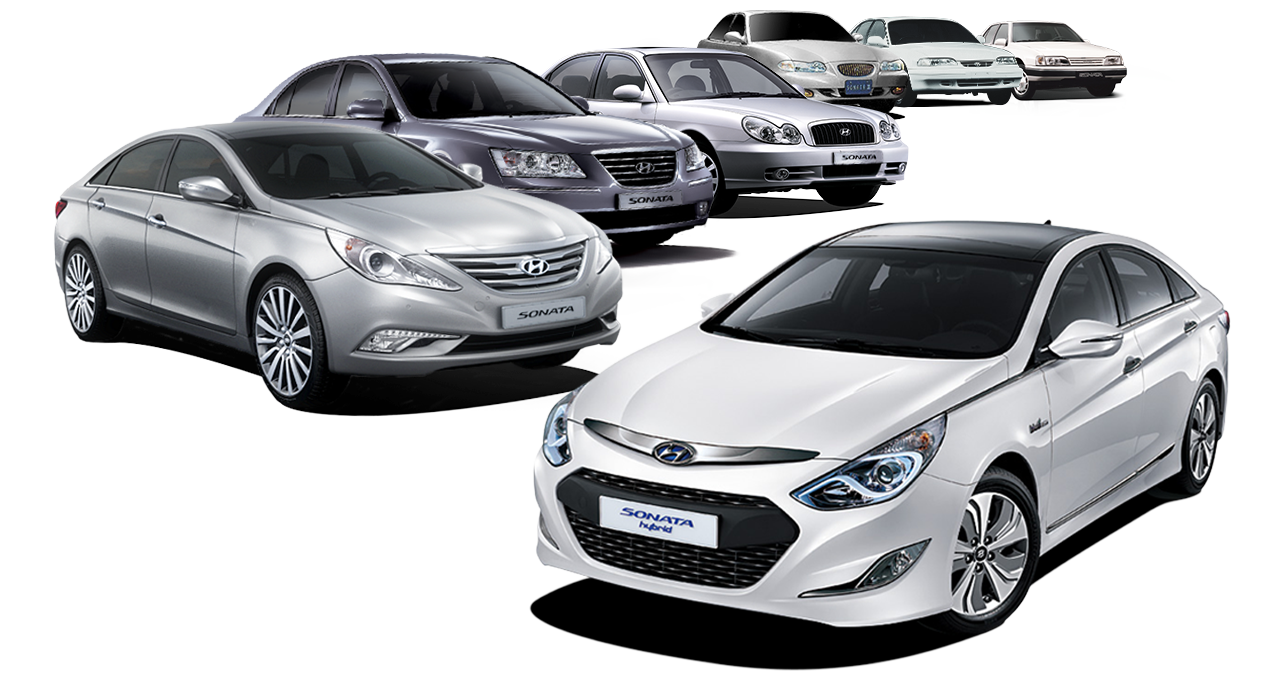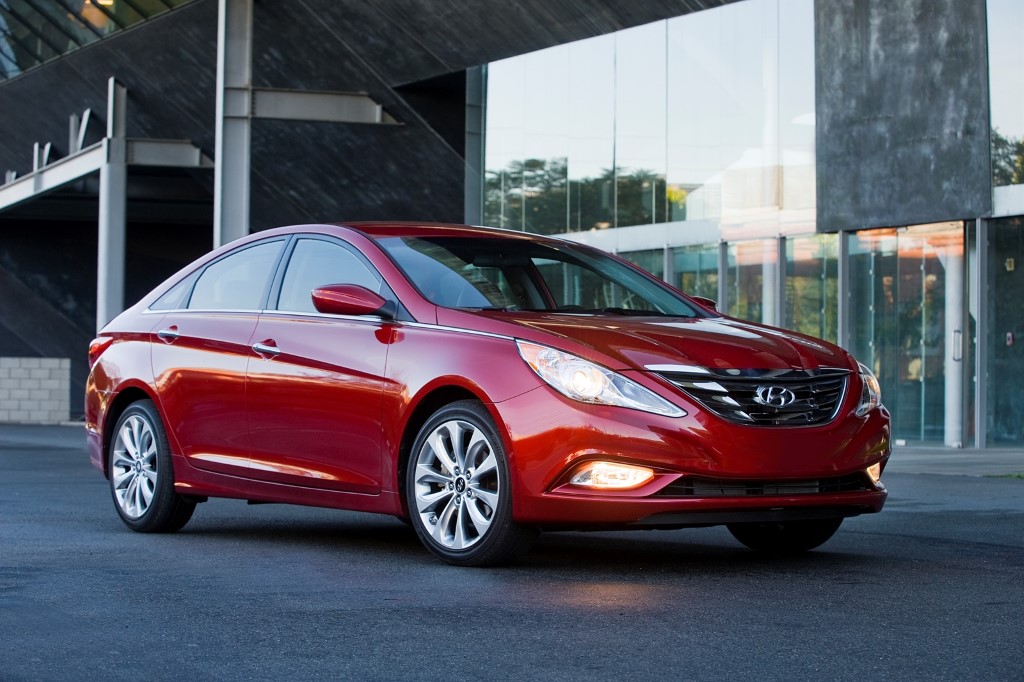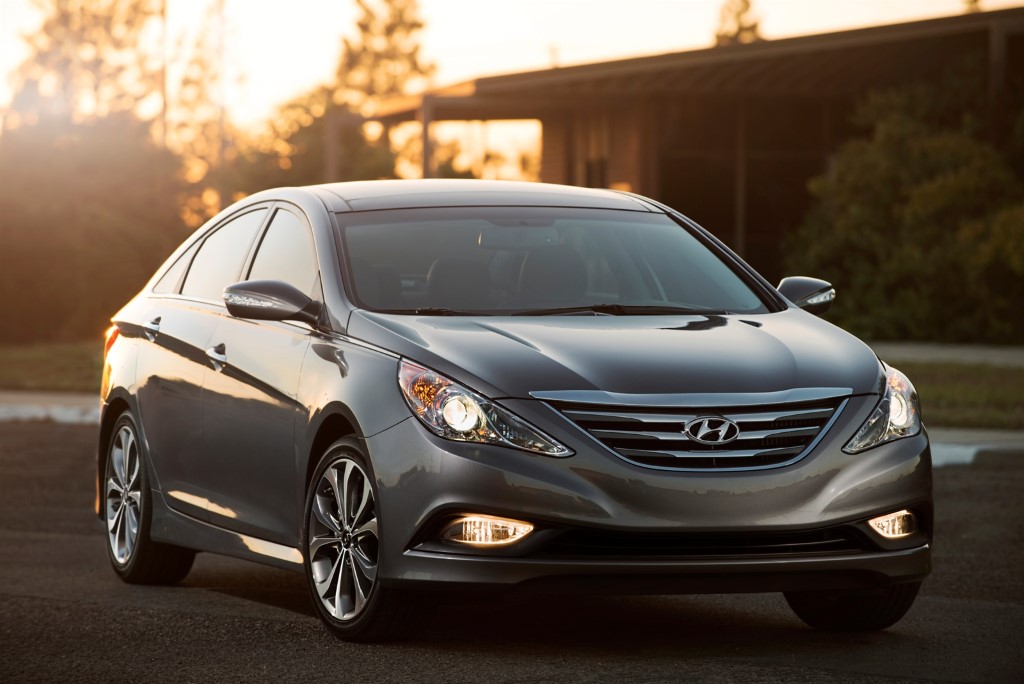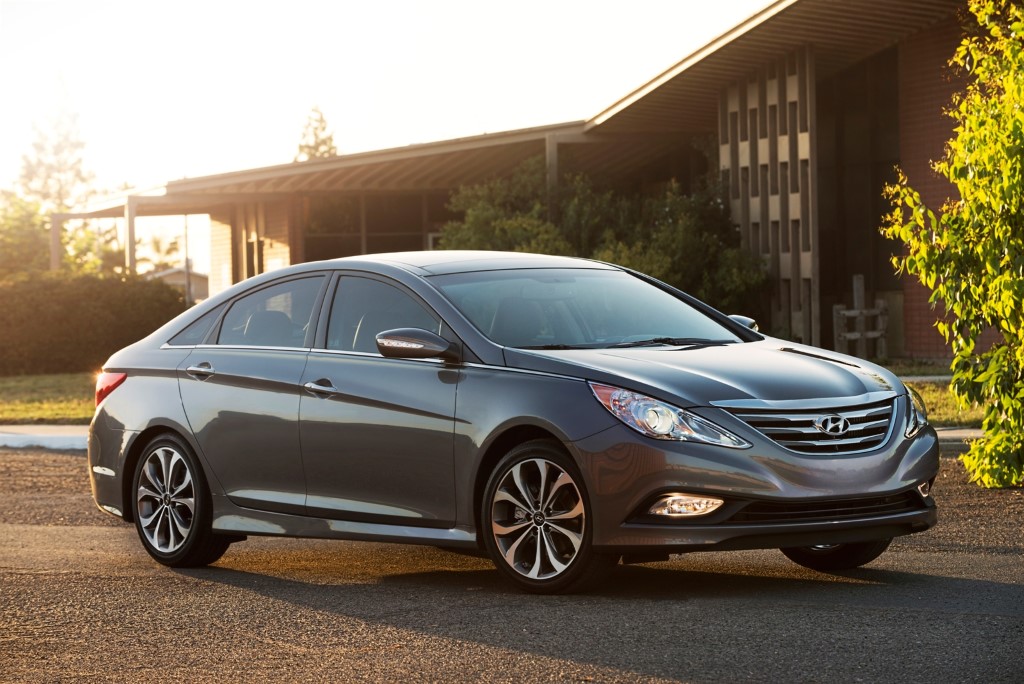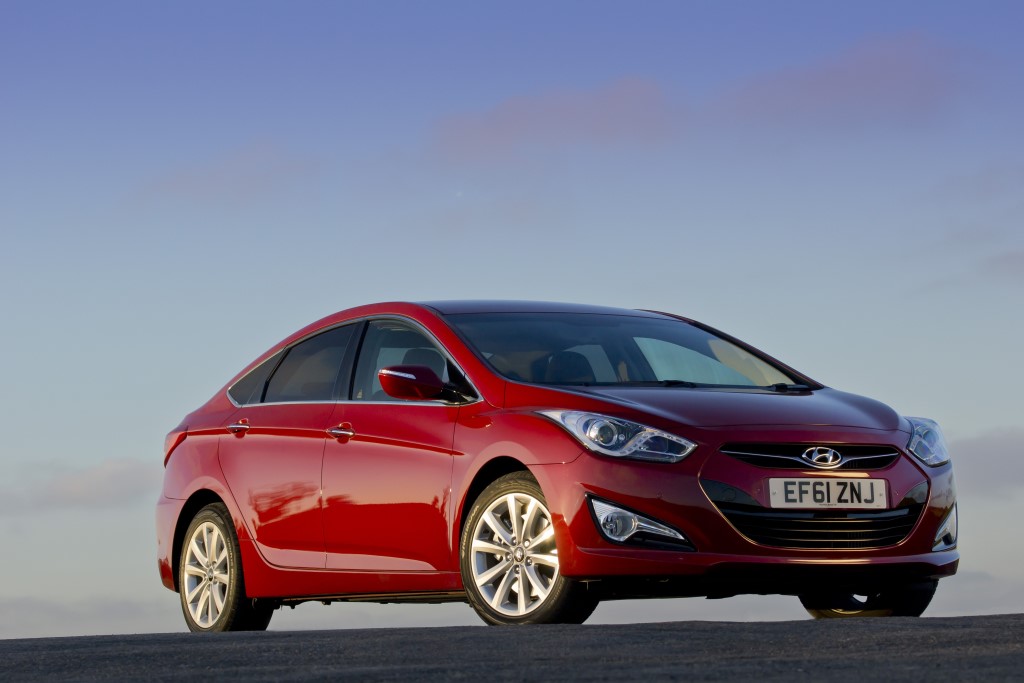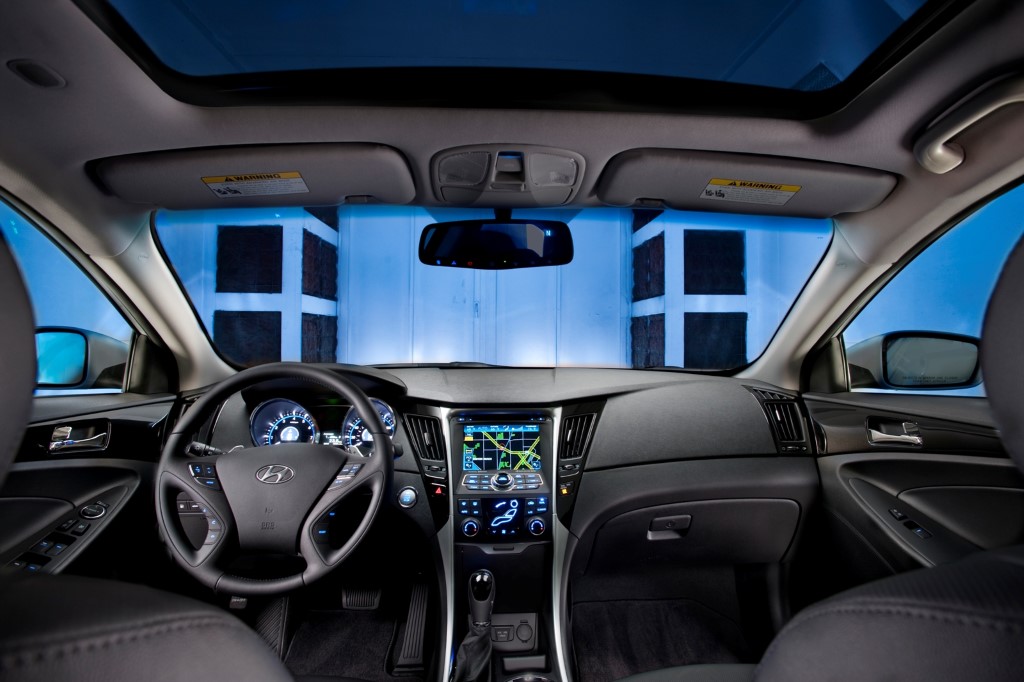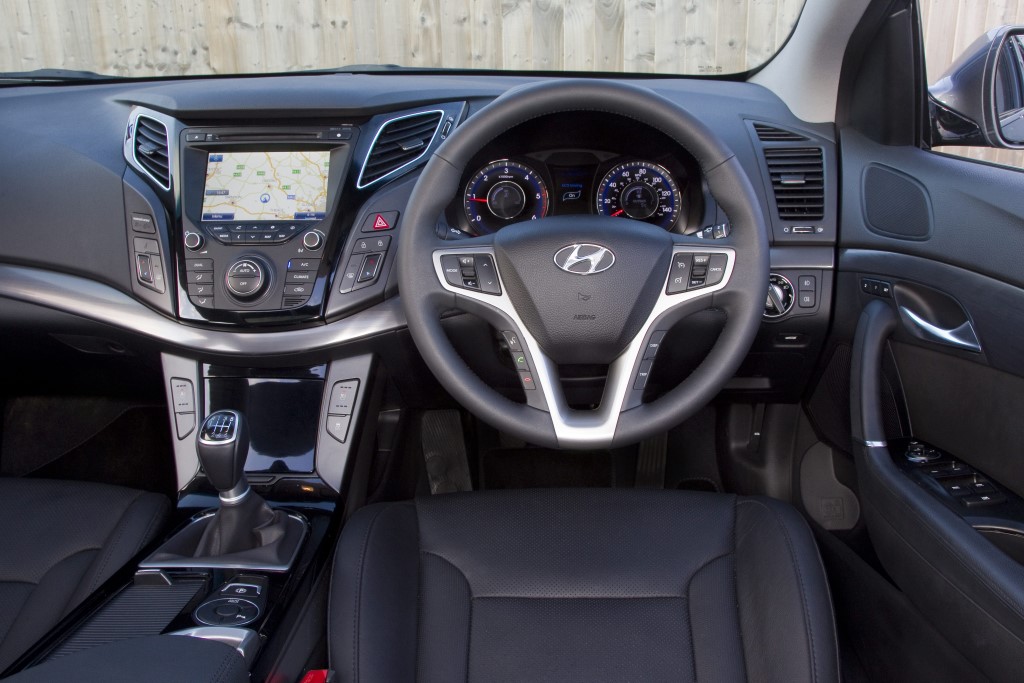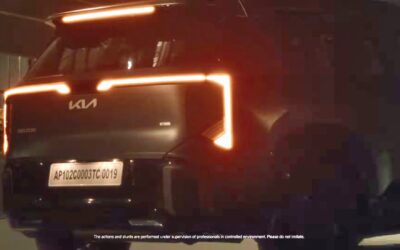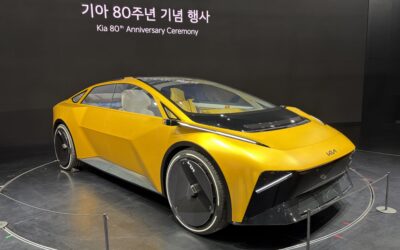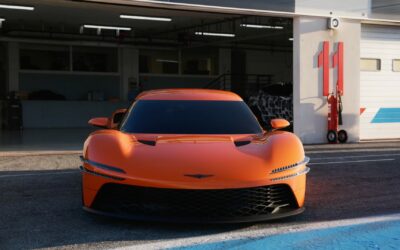With just three days to the next generation Hyundai Sonata Launch Event, scheduled for March 24 here in The Korean Car Blog we want to finish a complete review through 6 generation Sonata models, today with the current generation, the Sonata YF.
[ads id=”0″ style=”float:left;padding:9px;”]The Hyundai Sonata (Korean: 현대 쏘나타) was manufactured for the first time in 1985 and through many years it has changed its looks and technology to become one of the most popular models in the world. The first generation Sonata through the concept of “Art of Technology” showed a much different concept with simplistic straight lines.
Introduced at the 2009 Los Angeles AutoShow, the sixth generation Hyundai Sonata boasts a mouth-watering design an impressively well equipped entry-level trim. Premiering Hyundai’s ‘Fluidic Sculpture’ design language, the new Sonata boasts a more premium class look, with its unique character and personality. The interior is packed with entertainment and comfort features, sporting a pleasant and ergonomic arrangement and better quality materials. The sixth generation Sonata introduced a newly developed 2.4-liter GDi (Gasoline Direct Injection) engine and a new 6-speed automatic gearbox. The 2.4-liter GDi unit outputs 201 hp at 6300 rpm and thanks to its Dual Continuously Variable Valve Timing (DCVVT) and a Variable Induction System (VIS) for better engine breathing, achieves improved fuel economy (22 mpg city/35 mpg highway).
Comparison between the 2011 Hyundai Sonata vs. 2014 Hyundai Sonata (US-market)
Hyundai started Sonata YF development in 2005, with a total cost of ₩450 billion (US$ 372 million). In the Australian, New Zealand, Singaporean, and Colombian markets, the YF was renamed as “i45”, following the alphanumeric i-series nomenclature established by Hyundai in these markets, like in Europe. It will be badged as a “Sonata” in Eastern Europe, just as in North America and South Korea. For the Northern Europe, Hyundai launched european-developed i40. In January 2013 the i45 was discontinued in Australia following slow sales and limited supplies. An expanded i40 range will fill the gap left by the i45. The i45 has also been discontinued in Colombia, and replaced with the smaller i40 sedan, leaving Singapore and New Zealand as the only two markets still selling the vehicle under the i45 name.
Comparison between the Hyundai Sonata vs. Hyundai i40 (click to view full resolution)
There is also another gasoline engines, a 2.0-liter “Theta II” MPi gasoline engine with 165 hp. Its fuel economy has improved 11% and the 2.0 Turbo GDi delivering 274 hp, this engine be fitted with a 6-speed automatic transmission and a fuel economy of 21 mpg city/32 mpg highway. According to Hyundai this engine have the power of the V6 with low consumption. The Sonata YF is built with hot-stamped ultra high-strength steel. The 6th generation Hyundai Sonata was awarded Top Safety Pick from Insurance Institute for Highway Safety (IIHS) in the United States. The Sonata 2.0T was released in December 2010.
Sales in the United States began in early 2010. Next-gen Sonata (codenamed LF) will debut in the U.S. market as 2015 model year in April’s New York AutoShow. The exterior styling is expected to be more conservative because of weak reception of the current model in Korea (you can see spy shots here), and more closely to the new generation Genesis sedan.
Safety
Top Safety Pick Award in Insurance Institute for Highway Safety tests.
- Frontal impact crash test: “Good”
- Side impact crash test: “Good”
- Rear crash protection: “Good”
- Roof strength evaluation: “Good”
Later release (manufactured on/or after July 2, 2010) version of Model Year 2011:
- 5/5 stars by the U.S. National Highway Traffic Safety Administration (NHTSA) under 2010 new test rules
The 2011 Sonata is one of six vehicles rated Five Star under new rules as of November 2010.
- Overall Frontal Rating: 4/5 stars
- Frontal Rating (Driver): 5/5 stars
- Frontal Rating (Passenger): 4/5 stars
- Side Overall Rating (Front): 5/5 stars
- Side Overall Rating (Rear): 5/5 stars
- Side Barrier Rating (Front): 5/5 stars
- Side Barrier Rating (Rear): 5/5 stars
- Side Pole Rating (Driver): 5/5 stars
- Rollover: 5/5 stars
Early release (manufactured before July 2, 2010) version of model year 2011: 4/5 stars
- Overall Frontal Rating: 3/5 stars
- Frontal Rating (Driver): 3/5 stars
- Frontal Rating (Passenger): 3/5 stars
- Side Overall Rating (Front): 5/5 stars
- Side Overall Rating (Rear): 5/5 stars
- Side Barrier Rating (Front): 5/5 stars
- Side Barrier Rating (Rear): 5/5 stars
- Side Pole Rating (Driver): 5/5 stars
- Rollover: 5/5 stars
[ads id=”2″ style=”float:left;padding:9px;”]
Australasian NCAP – The Hyundai Sonata scored the highest possible rating of 5 stars “ANCAP Safety ratings: 2011 Hyundai Sonata”.
Korean NCAP – The Hyundai Sonata scored the highest possible ratings across the frontal, offset and side crash tests “KNCAP Safety ratings: 2011 Hyundai Sonata”.
China NCAP – The Hyundai Sonata scored the highest possible rating of 6 stars “CNCAP Safety ratings: 2011 Hyundai Sonata”.
Sonata Hybrid
At the 2008 Los Angeles Auto Show, Hyundai unveiled the Hyundai Blue Drive powertrain for the then next generation Sonata, which uses lithium polymer battery technology. It was reported to be based on Hyundai Blue Drive concept.
The 2011 Hyundai Sonata Hybrid sales in the U.S. began near the end of February 2011. The Sonata Hybrid drivetrain combines a 2.4-liter engine with six-speed automatic transmission, and a 30kW electric motor and lightweight lithium polymer batteries to produce a full gasoline-electric hybrid with 37 miles per US gallon (6.4 L/100 km; 44 mpg) in the city and 40 miles per US gallon (5.9 L/100 km; 48 mpg) on the highway. This powertrain will be shared by the 2011 Kia Optima Hybrid.
The 2011 Sonata Hybrid was one of the five finalists for the 2011 Green Car of the Year awarded by the Green Car Journal in November 2010, competing with two plug-in electric vehicles, the Nissan Leaf and the Chevrolet Volt, the 2011 winner.
2014 Sonata Hybrid
The 2014 Sonata Hybrid has noticeable improvements and has ranked 3rd out of 20 Affordable Midsize Cars (based on U.S. News’ analysis of 19 published reviews and test drives as well as their analysis of reliability and safety data). The 2014 hybrid has a long warranty and a spacious, high-quality interior. It’s base price ranges from $26,000-$30,750 and weights 3450-3550 pounds. As a hybrid, it emits 0.51 pounds of CO2 per mile and has an EPA fuel economy ratings of 36/40 mpg city/highway.
[ads id=”0″ style=”float:left;padding:9px;”]It comes with a 35 kW electric motor (up from 30) and a lithium-polymer battery that is 38% larger and more energy dense. The newer electric motor can run up to 62 mph, meaning that it can run on electricity at higher speeds, saving more gas. It also has a 2.4 liter, four-cylinder engine. An upgraded computer-controlled smoothens the transitions between gas and electric power modes. The hybrid’s 0-60 mph time decreased from 9.5 seconds to 8.1 (note: the non-hybrid Sonata’s time is 7.9).
Cumulative sales of the Sonata Hybrid in the U.S. reached 7,906 units through July 2011, representing 20% of Sonata sales according to Hyundai. The Sonata Hybrid was the number two selling hybrid since June, outsold only by the Prius. Considering cumulative sales in the U.S. market through December 2011, with 19,672 units sold, the Sonata Hybrid and the Kia Optima Hybrid together ranked second in hybrid sales for calendar year 2011, after the Toyota Prius, and surpassed the Honda Insight in September.
Recall
Hyundai is recalling some Sonata sedans from the 2012-2013 model years because of potential problems with their air bags. In rare circumstances, these cars’ curtain side airbags may inflate erroneously as a result of a manufacturing error. Hyundai dealers will notify owners and replace the airbags free of charge.
In 2009 Hyundai recalled the 2005-2008 Sonata for an issue with the brake light switch.
Facelift (2012-present)
In 2012, the Korean-produced Sonata received a mild mid-life facelift. Exterior changes include a new grille, slimmer LED mirror indicators, new front fog lights incorporating LED daytime running lamps (DRLs), new alloy wheel designs, as well as redesigned LED tail-lights. Interior changes include a new color touchscreen display for audio systems (on certain models), as well as redesigned dual-zone automatic climate controls, which now incorporate a small LCD display. Front parking sensors are now available on certain models, as well as an electronic parking brake. The facelifted model was first released in Korea in 2012, followed by international markets in early 2013. North American produced Sonatas received a facelift in late 2013, for the 2014 model year.
Sonata North American Sales
U.S. warranty
| Year(s) | Limited Warranty | Powertrain | Corrosion |
|---|---|---|---|
| 1989–1990 | 3 Years/36,000 Miles | 3 Years/Unlimited Miles | |
| 1991 | 3 Years/36,000 Miles | 5 Years/100,000 Miles | |
| 1992–1998 | 3 Years/36,000 Miles | 5 Years/60,000 Miles | 5 Years/100,000 Miles |
| 1999–2004 | 5 Years/60,000 Miles | 10 Years/100,000 Miles | 5 Years/100,000 Miles |
| 2005–2012 | 5 Years/60,000 Miles | 10 Years/100,000 Miles | 7 Years/Unlimited Miles |
Additionally, during years 1992–1994, the Sonata came with the Hyundai ValueCare Ownership Program that covered all regular scheduled maintenance at no charge for the first 2 years or 24,000 miles.
Awards
The Sonata has received the following awards:
2013
- Ranked Most Dependable Midsize car by J.D. Power and Associates.
- Kelley Blue Book 5-Year Cost to Own Award.
2012
- Insurance Institute for Highway Safety 2012 Top Safety Pick.
2011
- Finalist for MotorTrend Car of the Year.
- International Car of the Year 2011.
- 2011 Consumer Guide Best Buy.
- Car And Driver 2011 Ten Best List.
- Contender for Automobile Magazine 2011 Automobile of the Year.
- 2011 Hyundai Sonata represents the lowest depreciation in the midsize car segment in ALG Residual Value Index. The 2011 Sonata even outperforms comparably equipped 2010 model year Honda Accord.
- 2011 Hyundai Sonata Named IIHS Top Safety Pick.
- NADAguides.com Awards 2011 Hyundai Sonata ‘Car of the Month’ for 2010 March.
- The JB car pages awarded the 2011 Hyundai Sonata a best-in-class 4 1/2 star rating.
- 2011 Hyundai Sonata awarded Five Star by NHTSA the 2010 new test rules.
2010
- Ranked among the Top 3 Affordable Midsize Cars for 2010 by U.S. News.
2009
- Consumer Guide Recommended Buy for 2009.
- Intellichoice 2009 Best Overall Value.
- Named a Best Car on the Thrifty 50 List by U.S. News & World Report.
- “Interior of the Year”, 2009 Sonata, Ward’s Auto World, category: Best Redesign.
| Sixth generation (YF) | |
|---|---|
| Overview | |
| Also called | Hyundai i45 |
| Production | 2009–present |
| Assembly | South Korea: Asan United States: Montgomery, Alabama China: Beijing Indonesia Malaysia |
| Designer | Andre Hudson (2007) |
| Body and chassis | |
| Related | Kia Optima/Magentis/K5 Hyundai i40[25] |
| Powertrain | |
| Engine | 2.0 L Theta 163 hp (122 kW), I4 2.0 L Theta Turbo 274 hp (204 kW),I4[26] 2.4 L Theta 176 hp (131 kW), I4 2.4 L Theta GDi, 200 hp (150 kW), I4 2.0L Nu CVVL |
| Transmission | 6-speed automatic 6-speed manual |
| Dimensions | |
| Wheelbase | 2,795 mm (110.0 in) |
| Length | 4,820 mm (189.8 in) |
| Width | 1,835 mm (72.2 in) |
| Height | 1,470 mm (57.9 in) |
| Curb weight | 1,451–1,504 kg (3,199–3,316 lb) (2.4L) 1,514–1,566 kg (3,338–3,452 lb) (2.0L Turbo) |

